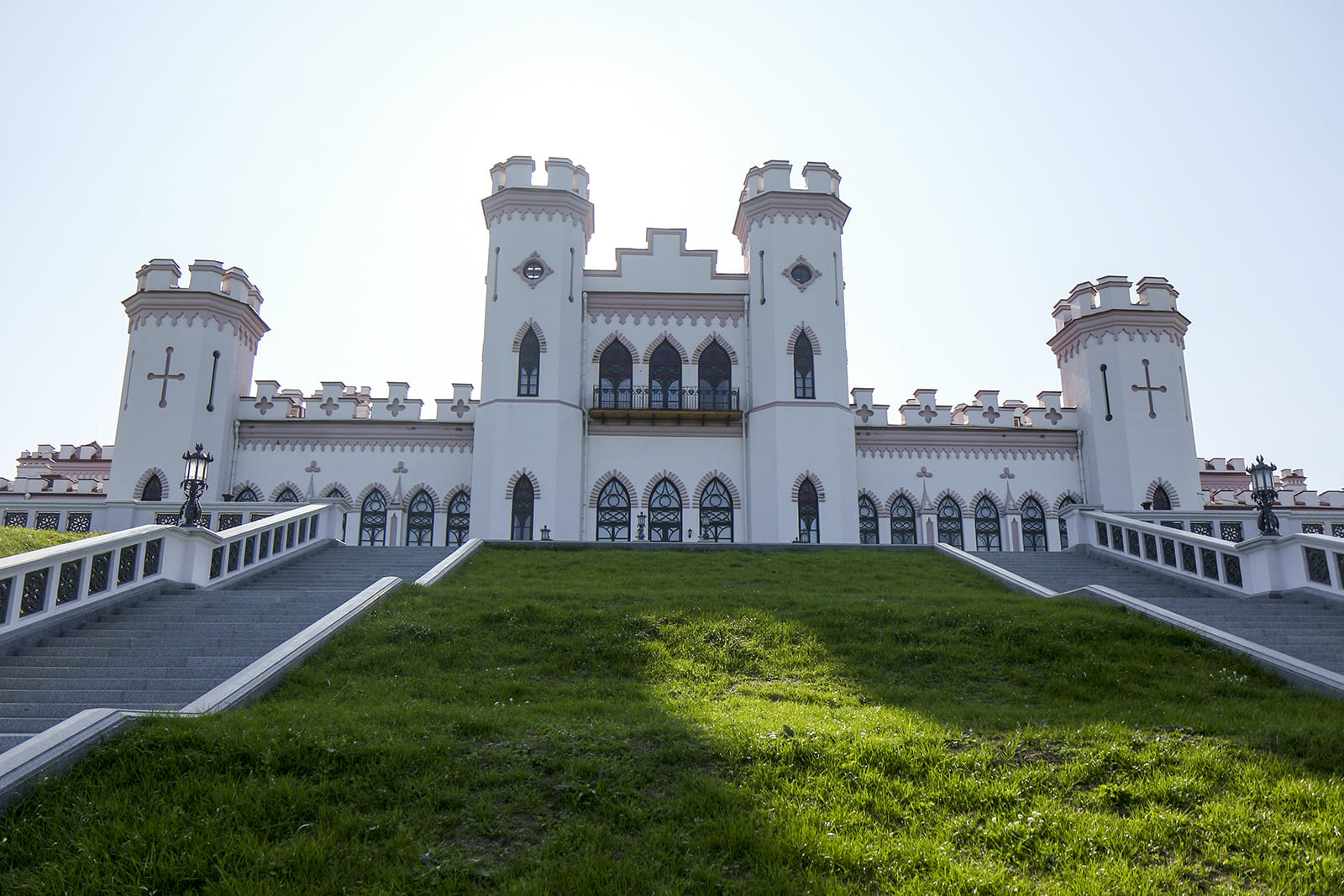- Brest region, Ivanovo District, Kossovo
History
Kossovo has been known since 1494, when the duke of Lithuania Alexander Yagelonchik presented these lands to marchal Yan Khreptovich.
For several centuries, the owners of Kossovo were eminent dynasties: Khreptovichi, Sangushki, Flemmings, Czartoryski, Sapieha. And in 1821 the estate was bought by Wojciech Puslovsky. He founded a carpet factory in Kossovo, built or restored about 60 churches in the vicinity. After Wojciech, the estate was inherited by his son Vandalin Puslowski. In 1838 he began the construction of a luxurious palace in Kossovo. The Kossovo Palace is unique in its own way. The building consists of a central two-story building and two side wings, and thanks to its faceted cogwheels, it is often called a miniature castle.
Each tower symbolized the month of the year, while the 4 central ones.
There are more than 100 rooms in the palace, and not a single entrance.

The Kossovo Palace was famous for its luxurious halls: in White, guests danced at noisy balls, in Black, they played cards, in Pink, they played music.
Object today
The beauty of the Kossovsky Palace, frozen in stone, is still impressive and attracts travelers. After many years of neglect, this "miniature castle" with 12 towers symbolizing the months of the year is once again welcoming guests. A major restoration is still underway, but everyone can appreciate the beauty of the palace and stroll through the halls that await the return of their former luxury.

Now the temporary exhibition is located in five halls. In the lobby there is a story about the local places, which are famous for other attractions (among them, for example, the nearby estate of the hero of several countries, Tadeusz Kosciuszko). The White Hall is dedicated to the family history of the former owners of Kossovo, the Counts Puslovsky. Two more halls - about the events of the past century and modern reconstruction. The fifth hall became an exhibition hall.
What to see
In Kossovo you can visit:
- museum of Tadeusz Kosciuszko - the house was restored on the foundations of the 18th century
- Trinity Church (1877) - Tadeusz Kosciuszko was baptized in this church
- Church of st. Anthony (1868)
- Assumption Church (1871)
- Catholic chapel (1859)